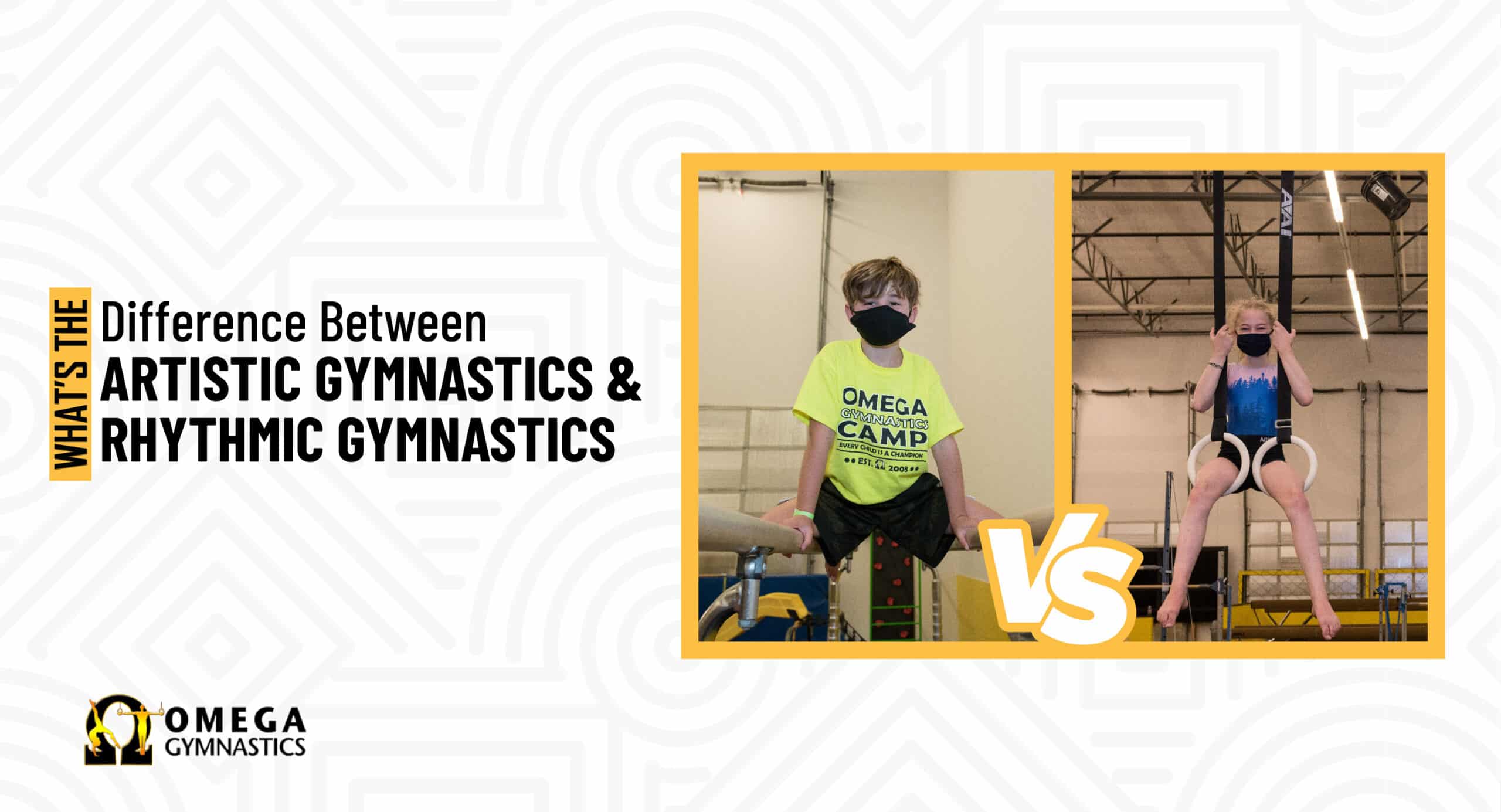Artistic gymnastics and rhythmic gymnastics are two different gymnastics disciplines. While they share a few similarities, they each have features that set them apart from each other.
In this article, we will explore the difference between artistic gymnastics and rhythmic gymnastics. We’ll look at what they entail, how children can get involved in either sport, as well as why these sports have been gaining popularity over recent years.
What is artistic gymnastics?
The athlete’s goal in artistic gymnastics is to perform an aesthetically pleasing routine on different apparatuses, such as balance beams and uneven bars.
They must demonstrate great flexibility, as well as complete complex skills like tumbling passes with precise technique.
In women’s artistic gymnastics, there are four events in which gymnasts compete: vault, uneven bars, balance beam, and floor. On the other hand, men compete in six events: pommel horse, still rings, parallel bars, vault, floor exercises, and horizontal or high bar.
There are also three categories within these events: compulsory exercises on a set number of skills, optional routine skills chosen at the athlete’s own discretion, and individual all-around competitions.
What is rhythmic gymnastics?
Rhythmic gymnastics is a discipline performed on the floor with an apparatus: ball, clubs, hoop, ribbon, or rope.
The goal of the athlete in rhythmic gymnastics is to create original, dance-based choreography set to music. It is not to complete skills with precision or show off flexibility.
There are four core events which you compete at if competing in rhythmic gymnastics: rope climbing, ball exercise/dance (which is similar to tumbling), hoop exercise/dance, and ribbon exercise.
Are both of these disciplines difficult to participate in?
If you’re interested in trying out either of these sports, both can be challenging to participate in.
Each one requires a different type of physical ability and mental strength.
Artistic gymnastics is highly technical. You must perform with perfect technique, or it will cost you points. Meanwhile, rhythmic gymnastics focuses heavily on dancing. The athlete’s performance must come alive and should tell a story through dance movements.
Why are these activities so popular?
Artistic gymnastics and rhythmic gymnastics have been increasing in popularity over the last few years. They are both great sports that focus on training both your physical body and your mental strength.
These two activities also allow you to join a team where you can be social with teammates who will lift you up when times get tough throughout practices or during competitions.
What are the benefits of artistic and rhythmic gymnastics?
There are many benefits to joining both these gymnastics disciplines.
These essential benefits include developing self-discipline, increasing strength and flexibility, and developing mental strength and social skills.
For those who have an artistic side or enjoy performing on stage, it would be great for you to try rhythmic gymnastics as this activity requires a lot of dancing and creativity.
If you enjoy pushing your strength and flexibility to the limit, artistic gymnastics may be something right up your alley.
Interested in getting your child to learn more about gymnastics? Check out our Recreational Program, where we offer a variety of classes focusing on different areas of the sport.









































